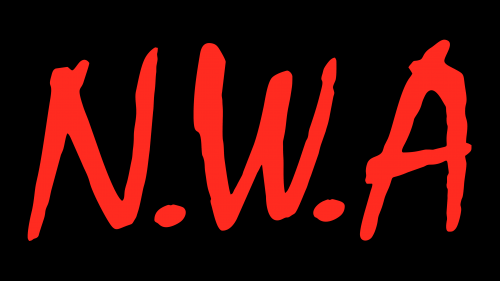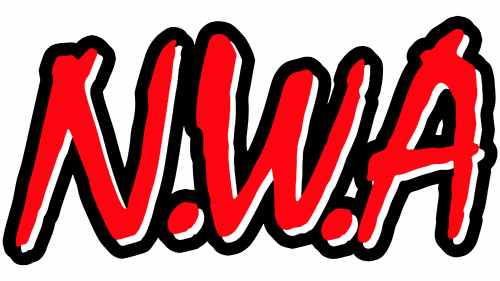Despite the protest nature of their songs, the NWA logo doesn’t come off as defiant. It encapsulates a range of emotions: bubbling energy, hatred, a desire to stand out, and an urge to shield oneself from injustice. But not protest. The emblem reveals the sacrifices of the social layer it represents and the trials faced by the people within it.
Nwa: Brand overview
| Founded: | 1987 – 1991, 1999 – 2002, 2015 – 2016 |
| Founder: | Arabian Prince , Dr. Dre , Eazy-E and Ice Cube |
| Headquarters: | Compton, California, U.S. |
The American group NWA (Niggaz Wit Attitudes) is known for its heated tracks, filled with disdain for police brutality. The content of their songs is so shocking that they were banned from most major US radio stations. However, this didn’t stop the hip-hop artists from selling 10 million albums within the country alone. Today, musicians are recognized as the most significant figures in the gangsta rap genre. The group originated in 1987 in Compton, California, and has been active in phases.
Meaning and History
Initially, the NWA group consisted of two people: gangsta rapper Eazy-E (Eric Lynn Wright) and rapper-producer Dr. Dre (Andre Romell Young). Later on, other members joined them: Arabian Prince, Ice Cube, DJ Yella, MC Ren. Forming the core of the hip-hop ensemble, they released their first album, which immediately skyrocketed their fame. That album was “Straight Outta Compton” (1988), debuting the logo that was subsequently used until their final collection, Efil4zaggin (1991).
What is NWA?
NWA stands for the most influential rap group, Niggaz Wit Attitudes, pioneering the gangsta rap subgenre. It was founded by Eric Lynn Wright (stage name – Eazy-E) in 1987 and continuously operated until 1991. Afterward, there were two more active periods in their career, but they weren’t as prolonged as the first: 1999 to 2002 and 2015 to 2016. The musical ensemble was based in Compton, California.
1988 – 1991
The NWA logo is as unconventional as the musical direction the group represents. It effectively mirrors the intrinsic energy of the genre and the group members. Several factors highlight this: its shape, style, and color.
At a glance, the inscription on the emblem appears like graffiti on a wall or symbols scratched into a fence. This bold design, capturing the protest aesthetics of the rap group, is perfect for the expressive concept of hip-hop musicians. The central letter is flanked by dots on both sides. Conversely, there’s no dot after the “A,” aligning with the grammatical norm for British English.
In terms of style, the logo boasts a balanced blend of sharp edges and smooth contours.
Essentially, it strikes a harmony between elegance and audacity. The bold design is influenced by rebellion and raw energy, embodied in careless strokes. In this way, the typographic marvel has conveyed the pioneering legacy of the musical group that introduced the world to the gangsta rap subgenre.
The emblem’s color also aligns with a spirit of confrontation, struggle, and explosive energy. It seems like a challenge thrown at society. Primacy is given to red – a symbol of courage, bravery, and freedom. Any of its shades wonderfully contrasts with the rest of the palette, regardless of the background used on the album covers. It precisely conveys the message of these iconic performers.
Font and Colors
The inscription used in the NWA badge seems unique. However, it’s not. The typeface wasn’t specifically designed for the project and existed long before. It was crafted by typographer Roger Excoffon and seamlessly meshed with the innovative musical style’s essence. The font, reminiscent of a brushstroke, is called Mistral. The logo’s palette is red – the color of rebellion, emotional heat, and peak tension.







